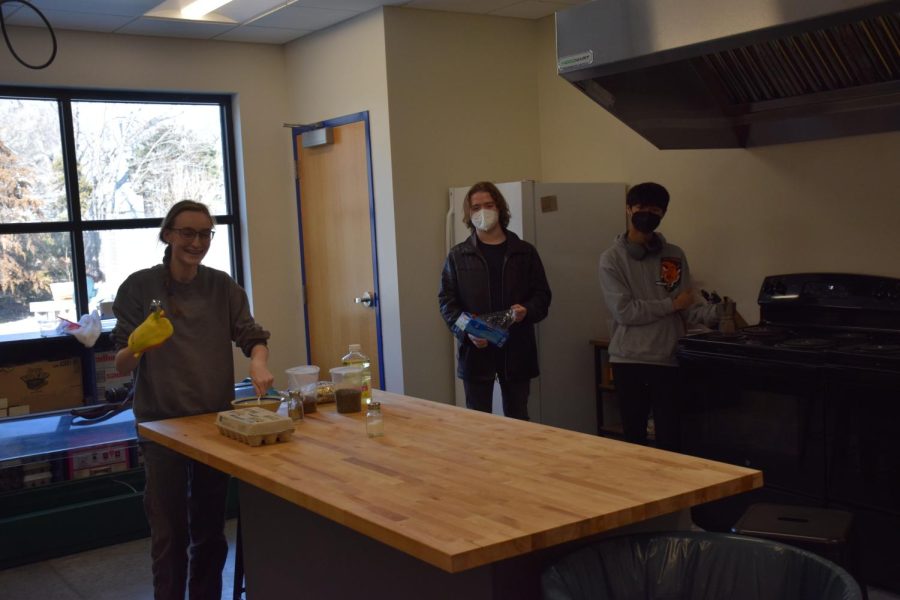Real-World Classes
Seaburians discuss classes with practical applications
Freshmen Katherine Eudaly, Tristan Wentling and Evan Tangpornsin cook with the school’s recently purchased kitchen items. Madame Buckner’s French I class put the new supplies to test by making crepes at the beginning of the month.
February 23, 2023
Seabury offers plenty of academic electives and opportunities, but we’ve recently been moving toward the addition of more classes that teach practical, “real-world” skills. Here are a few of them.
Faculty member Shane Richmond teaches Financial Literacy, an elective covering “things we wouldn’t normally learn about like taxes, savings and insurance,” says senior Will Richards. “It’s important kids learn this stuff in high school.”
Financial Literacy includes not just lectures but engaging activities featuring real-world situations. “We did a mock job interview amongst ourselves and with teachers for both real positions we’d find on Indeed, but we also made up businesses,” Richards says.
Despite being a new class, it seems to be popular among students. “It’s laid back and fun which isn’t something you’d think a financial literacy class would be,” Richards says. “I recommend everyone to take it before they graduate.”
Similar to Financial Literacy, in Computers, faculty member Julie Pearce tasks her eighth-grade students to create monthly budgets and manage finances based on various simulated life situations.
Though the simulated decisions can be difficult for students, they reflect real-life situations. It can be “really confusing,” says eighth-grader Eva Farmer. “We needed to choose where to live. I wanted to live in Washington and there are different tax laws there … I didn’t choose to live in Seattle because the crime rate was 800.”
Pearce also asks students to create grocery lists based on their budgets. “Every two weeks we’d go to the grocery store,” Farmer says. “We’d create a calculation of how much money we should put aside for grocery shopping, usually about 1.5% of our monthly salary.”
Seabury has recently been teaching real-world skills from sixth grade: faculty member Vanessa Eicher teaches the SEE program (Social, Emotional and Ethical). To seventh grader Jack Hawley, a former SEE student, SEE is about “being part of a social environment of people, and how to react to that.”
“One activity we did, we each had a color on our head and the goal was to be the first one to be a team with everyone with the same color,” Hawley says. “You had to know who wasn’t lying and who was, so it was like a trust exercise. Trust and teamwork.”
A future prospect for a “real world” class involves our new culinary room. Faculty member Sonja Czarnecki prepares dumplings with students for Lunar New Year. Faculty member Elena Buckner hosts Crepe Day for her French students. One day, perhaps, there will be a full-fledged cooking class … we may just have to wait and see.
